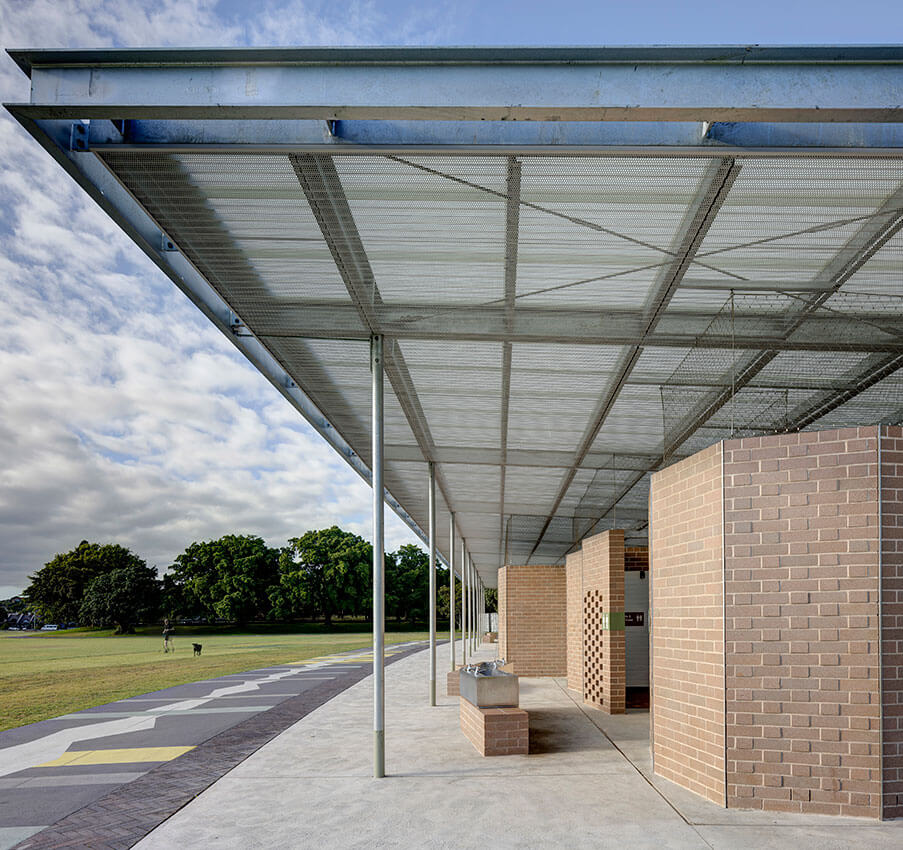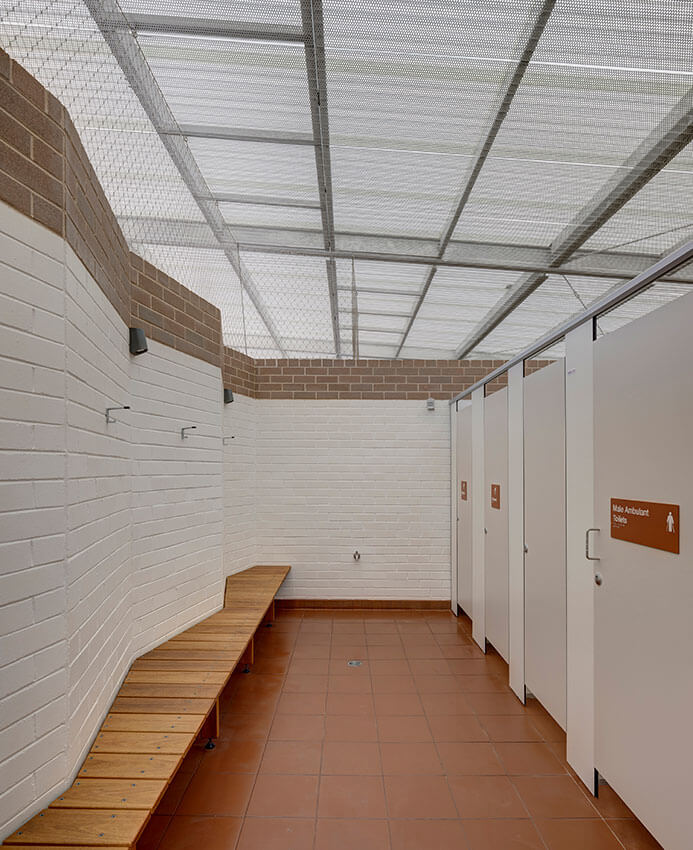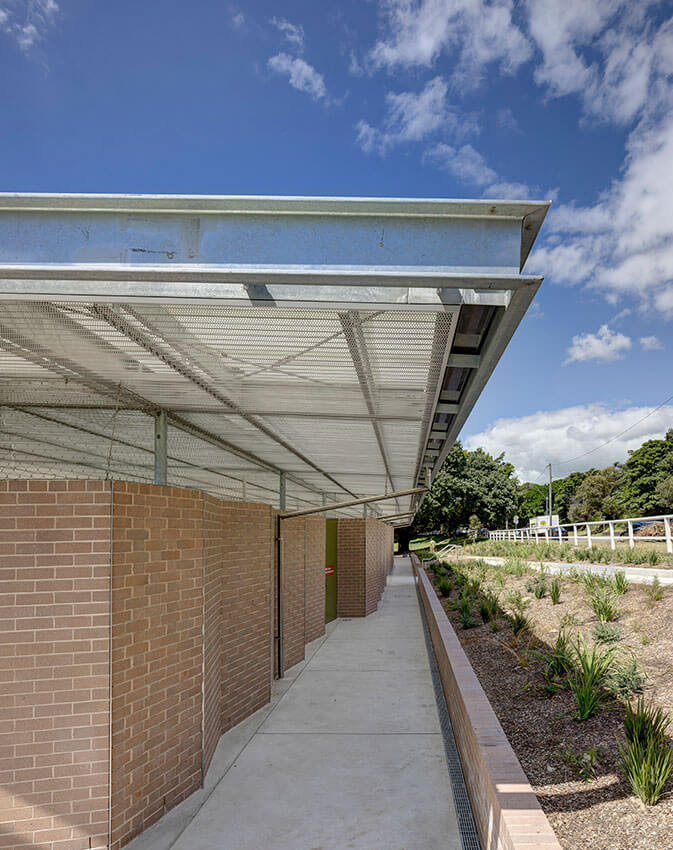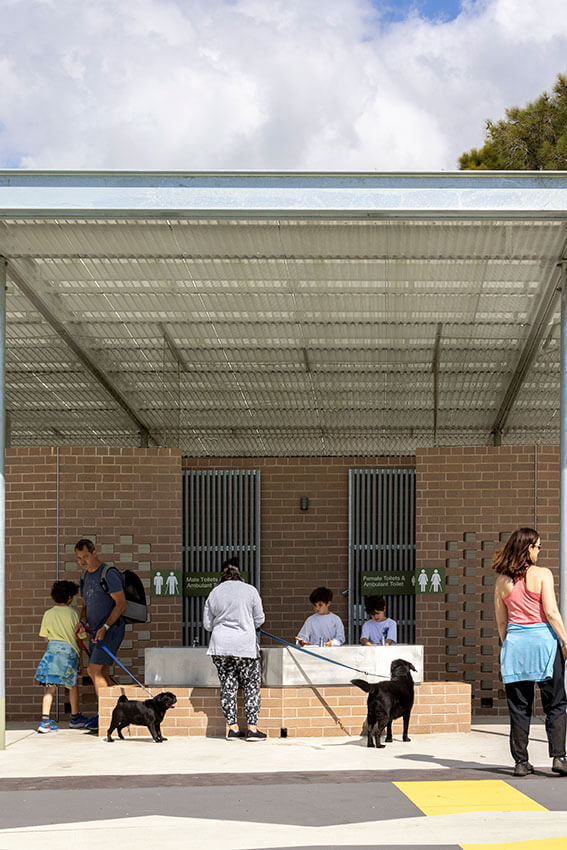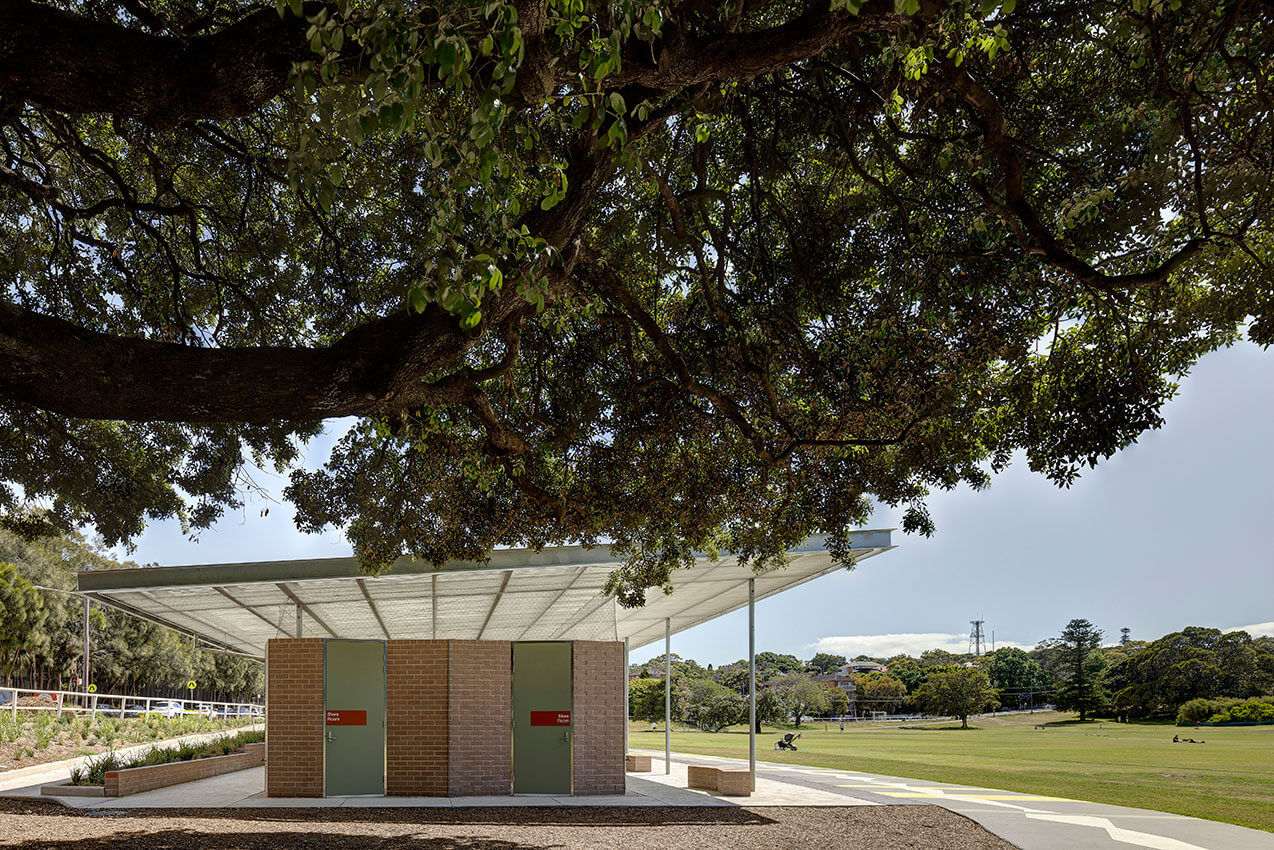Queens Park Sports Pavilion | Sam Crawford Architects
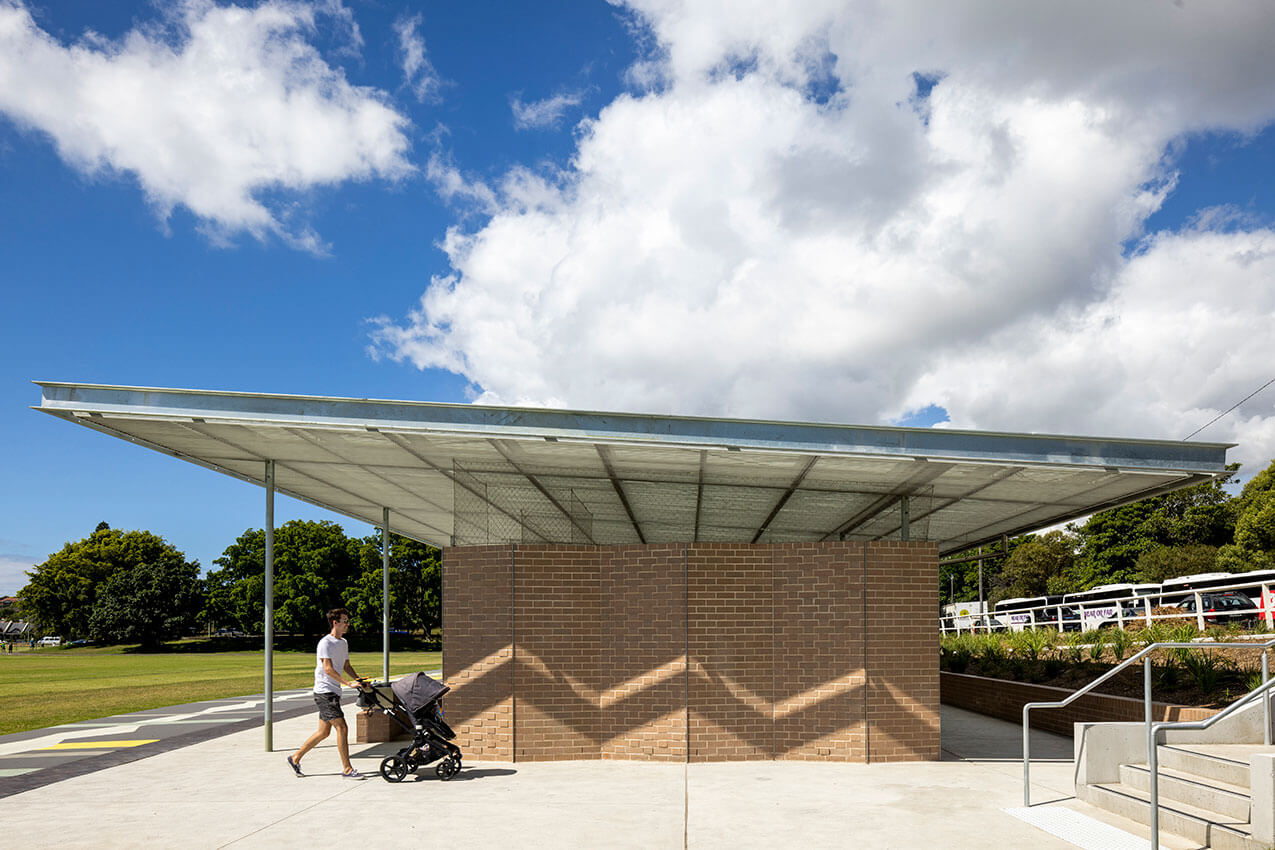
2023 National Architecture Awards Program
Queens Park Sports Pavilion | Sam Crawford Architects
Traditional Land Owners
Gadigal of the Eora Nation
Year
Chapter
New South Wales
Category
Builder
Photographer
Media summary
Located on unceded Gadigal Land, Queens Park has been a significant and historical recreational area since its establishment in 1888. The Client’s brief called for a new sports pavilion to replace the existing, tired amenities and to serve the growing needs of the public and vibrant sporting community. The building’s primary expression presents a low masonry base of serrated brick walls with a translucent skillion roof floating above.
The zig-zag walls of the pavilion speak to the serrated leaf of the Banksia Serrata, a species from the Eastern Suburbs Banksia Scrub, which was the dominant ecological community in the area before colonial clearing. Alternating wall panels of smooth and extruded brick patterns further reference the textural richness of the banksia’s floral bracts. The building’s mass parts in the middle, providing a central covered area that allows views through to the park beyond.
The previous amenities block was constructed in 1986 and was no longer fit-for-purpose, meaning a more modern building was required to service the next generation of the Queens Park sporting community.
Sam Crawford Architects designed a facility that met our requirement for it to be incorporated in the landscape, but also be light, airy, and easily accessible for our park users.
It’s now clear that the facility is achieving its purpose and is delivering a better game day experience for our local community sporting clubs, as well as our and regular visitors to Queens Park.Client perspective
Project Practice Team
Sam Crawford, Design Architect
Rhys Nicholas, Project Lead
Caitlin Condon, Graduate of Architecture
Ken Warr, Construction Systems Specialist
Scott Rowland, Graduate of Architecture
Janani Premchand, Graduate of Architecture
Allen Huang, Graduate of Architecture
Connect with Sam Crawford Architects

